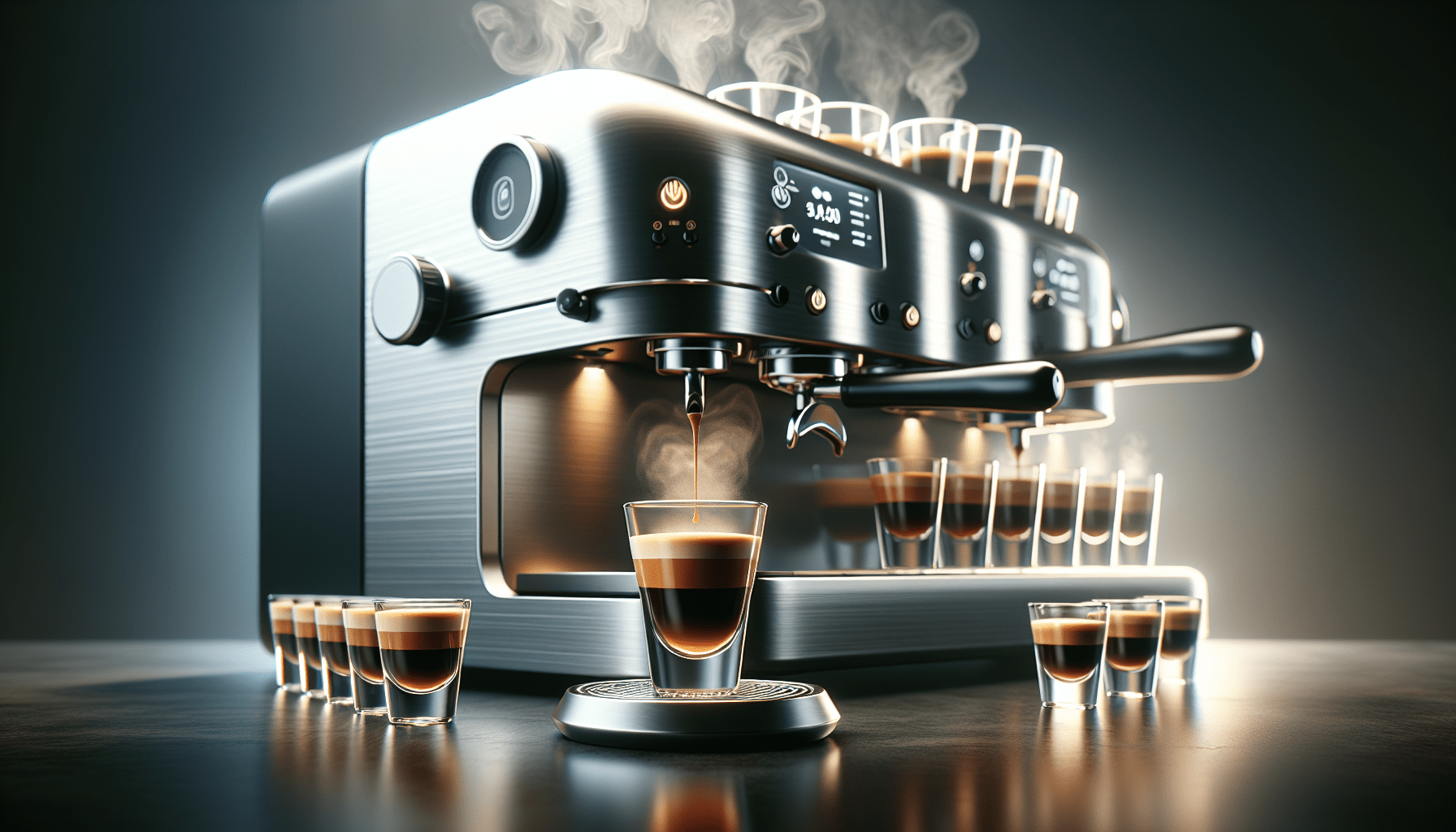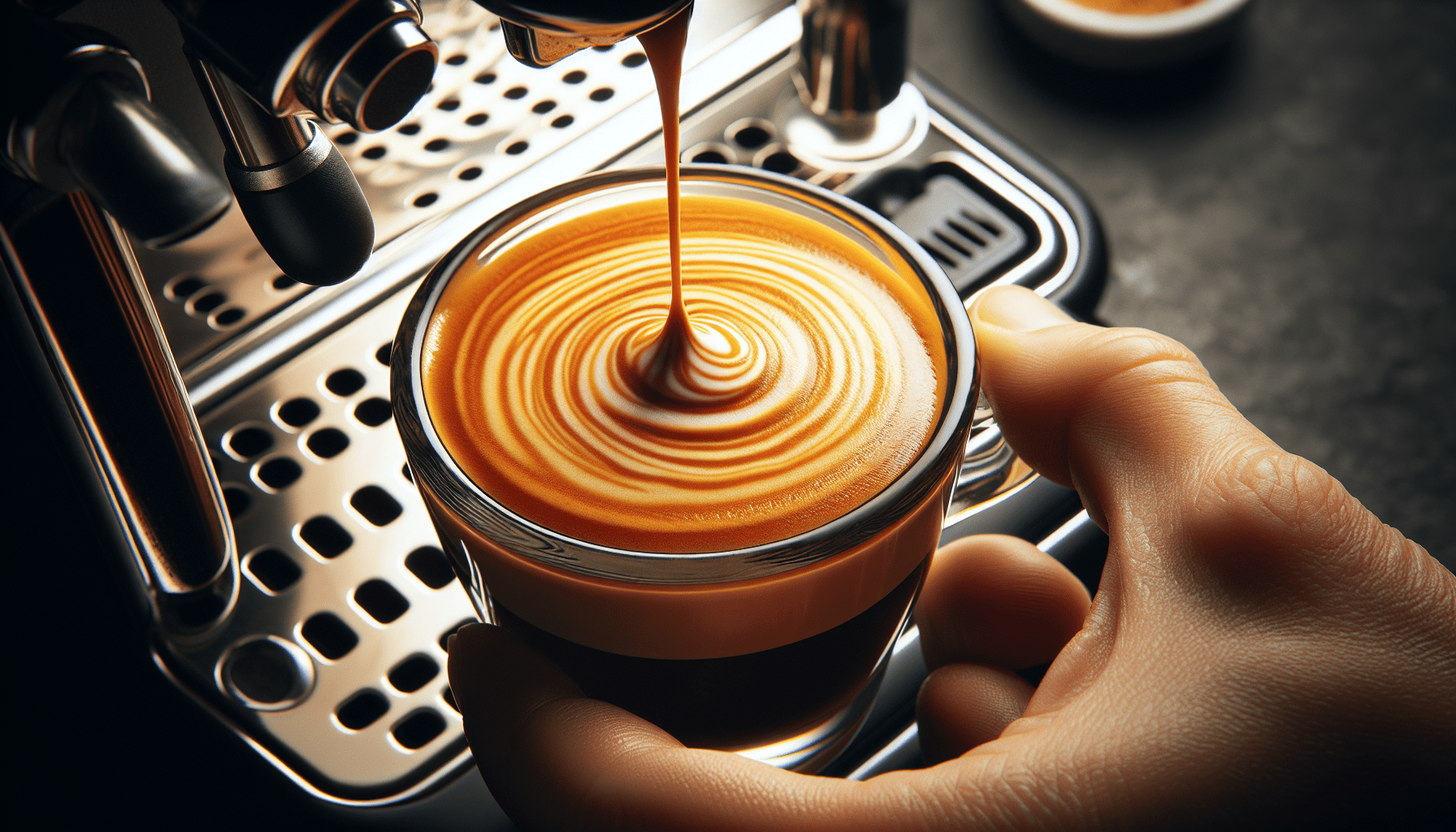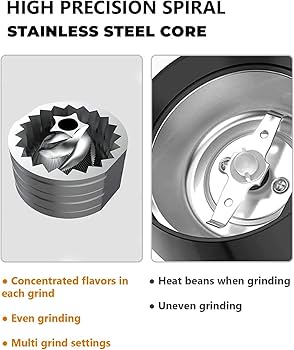Are you a coffee enthusiast looking to recreate your favorite café experience at home? If so, you may be wondering if it’s possible to brew multiple shots of espresso in a row using a semi-automatic machine. The answer is yes! With a semi-automatic machine, you have the flexibility to brew back-to-back shots of espresso without any hassle. Say goodbye to waiting in line at your local coffee shop and hello to enjoying multiple delicious shots of espresso in the comfort of your own kitchen.
Understanding Semi-Automatic Espresso Machines
What is a semi-automatic espresso machine?
A semi-automatic espresso machine is a type of coffee machine that requires some manual input from the user, but also has automated features to simplify the brewing process. Unlike fully automatic machines that handle everything from grinding to brewing, semi-automatic machines give you more control and flexibility in customization.
How does a semi-automatic espresso machine work?
A semi-automatic espresso machine works by utilizing a pump to force water through the coffee grounds under pressure. It typically has a built-in water reservoir, a heating element to heat the water, and a group head where the portafilter is inserted. The user controls the extraction process by manually starting and stopping the flow of water, allowing for greater control over the strength and flavor of the espresso shot.
Advantages of using a semi-automatic machine
One of the main advantages of using a semi-automatic machine is the level of control it provides. You have the freedom to adjust variables such as grind size, dose, and extraction time to achieve the desired taste. This makes it ideal for experienced baristas who appreciate the art of coffee making. Additionally, semi-automatic machines tend to be more affordable compared to fully automatic or manual espresso machines, making them a popular choice for home use.
The Process of Brewing Espresso Shots
Step 1: Preparing the machine
Before brewing, it’s important to ensure that your semi-automatic espresso machine is properly prepared. This typically involves filling the water reservoir and allowing the machine to warm up to the ideal brewing temperature, usually around 195-205°F (90-96°C). Some machines may also require preheating the portafilter and cups to maintain optimal temperature throughout the brewing process.
Step 2: Grinding and dosing the coffee
The next step is grinding and dosing the coffee beans. It is recommended to use freshly roasted beans for the best flavor. Grind size is crucial and will depend on personal preference and the specific machine being used. Finer grinds are typically used for espresso shots, as they increase surface area and extraction. After grinding, the coffee is dosed into the portafilter using a coffee scoop or a dosing tool.
Step 3: Tamping the coffee grounds
After dosing, the coffee grounds need to be evenly distributed and compressed or tamped. This ensures that water flows through the coffee bed consistently, leading to a well-extracted and balanced shot. Tamping can be done using a tamper, applying downward pressure on the coffee grounds in the portafilter. The aim is to achieve a level and firm tamp, avoiding unevenness or air pockets that could affect the extraction.
Step 4: Extracting the espresso shot
With the portafilter securely locked in place, it’s time to initiate the extraction process. This is done by activating the pump, which pushes hot water through the packed coffee grounds. The extraction time and volume can be controlled by manually starting and stopping the water flow. Ideally, a shot should take around 25-30 seconds to extract, and the liquid should have a rich, dark color with a layer of crema on top.
Step 5: Cleaning and resetting the machine
After each shot, it’s important to clean the portafilter and group head of any residual coffee grounds. This prevents flavors from carrying over and ensures freshness in subsequent shots. Additionally, the machine may need to be reset by purging excess water or steam. Regular maintenance, including backflushing with a cleaning agent, descaling, and cleaning the steam wand, is essential for maintaining the longevity and performance of your semi-automatic machine.
Limitations of Semi-Automatic Machines
Limited capacity of the machine
One limitation of semi-automatic machines is their relatively small capacity. Most home espresso machines are designed to brew single or double shots at a time, which may not be ideal for serving multiple people or catering to high demand. If you frequently need to brew multiple shots consecutively, you might consider investing in a machine with a larger capacity or opt for alternatives like dual boiler machines.
Heat management
Heat management can be a challenge when brewing multiple shots with a semi-automatic machine. The constant use of the machine can cause the heating element to struggle in maintaining a consistent temperature, leading to fluctuations in the quality of the shots. It’s important to monitor the temperature gauge and give the machine adequate time to recover between shots to avoid overheating or underheating the water.
Time between shots
Another limitation when brewing multiple shots consecutively is the need to wait between each shot. Semi-automatic machines require time for the heating element to reheat the water to the optimal temperature. This can lead to slower brewing times, especially if you’re serving a larger group or during busy periods. Proper time management and utilizing techniques to minimize time between shots can help mitigate this limitation.
Brewing Multiple Shots Consecutively
Understanding the machine’s capacity
When brewing multiple shots consecutively, it’s important to understand the capacity of your semi-automatic machine. Pay attention to factors such as the size of the water reservoir, the strength of the heating element, and the overall build quality of the machine. Higher-end machines often have larger reservoirs and more powerful heating elements, allowing for a greater number of consecutive shots.
Managing heat during consecutive shots
To maintain consistency when brewing multiple shots, it’s crucial to manage heat effectively. Give the machine enough time to recover between shots by allowing the heating element to reach the optimal temperature. You can also reduce heat loss by preheating the portafilter and cups, which helps to keep the brewing temperature stable. This ensures that each shot is extracted with the same level of precision and flavor.
Techniques to minimize time between shots
Minimizing the time between shots is essential for maintaining efficiency when brewing multiple shots consecutively. A few techniques that can help reduce the wait time include: multitasking by grinding and dosing the coffee for the next shot while the current shot is extracting, pre-warming additional portafilters to eliminate the need for cooling down between shots, and using a larger-sized portafilter that allows for more coffee per shot.
Factors Affecting Consecutive Shots
Type of coffee beans
The type of coffee beans used can significantly impact the consecutive shots’ flavor, strength, and consistency. Different coffee beans have distinct flavors and levels of oiliness that can affect how they extract and behave in the machine. Experimenting with different types of beans and finding the ones that work best with your machine and taste preferences can lead to more consistent shots.
Grind size and consistency
Achieving the right grind size and consistency is crucial for consecutive shots. The grind size determines the extraction rate, with finer grinds extracting faster and coarser grinds extracting slower. Consistency is key to ensure even extraction in each shot. Invest in a quality burr grinder that allows for precise adjustments and consistently produces the desired grind size.
Tamping pressure
Tamping pressure plays a significant role in the quality of consecutive shots. Inconsistent or uneven tamping can lead to channeling, where water finds a path of least resistance through the coffee bed, resulting in an imbalanced extraction. Develop a consistent technique and apply a firm, even tamp to achieve optimal results.
Water temperature
Water temperature is a critical factor in achieving consistent consecutive shots. It affects the rate of extraction and the flavors extracted from the coffee. Ensure that your semi-automatic machine maintains the optimal brewing temperature throughout the consecutive shots. Fluctuations in temperature can result in under-extracted or over-extracted shots, impacting the overall quality and taste.
Machine maintenance and cleaning
Regular machine maintenance and cleaning are essential for consistent performance. Coffee oils and residues can build up in the machine, affecting the taste and quality of the consecutive shots. Follow the manufacturer’s guidelines for cleaning and maintenance, including descaling, backflushing with a cleaning agent, and regular group head and steam wand cleaning.
Tips for Brewing Consistent Shots
Use a quality grinder
Investing in a quality burr grinder is essential for brewing consistent shots. Grind size and consistency have a significant impact on the extraction process, so having precision controls and a reliable grinder is crucial. Choose a grinder that allows for easy adjustments and produces consistent particle sizes.
Dose consistently
Consistency in dosing ensures that each shot contains the same amount of coffee, leading to more uniform extraction. Use a scale to measure the appropriate dose and aim for consistency in the amount of coffee you load into each portafilter. This will help achieve consistency in taste and strength across consecutive shots.
Tamp evenly
An even tamp distributes the coffee grounds evenly in the portafilter, allowing for uniform extraction. Develop a consistent tamping technique, applying even pressure across the entire coffee bed. This will help ensure that water flows through the grounds evenly and consistently.
Control shot extraction time
Monitoring the shot extraction time is crucial for consistent results. Aim for an extraction time of around 25-30 seconds, as this is often considered the ideal range for espresso. Adjust the grind size, dose, or tamp pressure if the extraction time deviates from this range. Consistency in shot extraction time helps maintain a consistent flavor profile.
Keep the machine clean
Regular cleaning is essential for maintaining the performance and flavor of your semi-automatic machine. Clean the group head daily, backflush regularly, and clean the steam wand after each use. Additionally, descale the machine periodically to remove mineral buildup and ensure optimal heat transfer. A clean machine will contribute to better-tasting consecutive shots.
Practicing and Improving Efficiency
Developing a routine
Developing a routine is key to improving efficiency when brewing consecutive shots. Create a systematic workflow that covers steps such as grinding, dosing, tamping, and extracting. Practice your routine until it becomes second nature, allowing you to focus on consistency and speed. Over time, you will become more efficient and confident in your brewing skills.
Experimenting with workflow
When brewing multiple shots consecutively, don’t be afraid to experiment with your workflow. Find the optimal order of tasks that allows for maximum efficiency and consistency. For example, you may prefer to grind all the coffee at once or alternate between grinding and dosing for each shot. Adapt your workflow based on the specific machine, tools, and personal preferences.
Training your skills
Consistency and efficiency come with practice and continuous improvement. Take the time to train your skills, focusing on each step of the brewing process. Practice tamping techniques, experiment with different grind sizes, and familiarize yourself with the behavior of different coffee beans. Regular training and experimentation will help you refine your technique and achieve great-tasting consecutive shots.
Time-Saving Alternatives
Dual boiler machines
Dual boiler machines offer a time-saving alternative for brewing multiple shots consecutively. These machines have separate boilers for brewing and steaming, allowing for simultaneous operations. With separate temperature controls, you can maintain optimal brewing temperature while also steaming milk for lattes or cappuccinos. Dual boiler machines are often more expensive but provide efficient and consistent performance.
Semi-automatic machines with multiple group heads
Some semi-automatic machines feature multiple group heads, allowing for simultaneous brewing of multiple shots. This can be particularly useful in busy environments such as coffee shops or commercial settings. Each group head operates independently, enabling baristas to serve customers quickly without compromising quality or consistency.
Coffee pod systems
Coffee pod systems, such as Nespresso or Keurig, offer a convenient and time-saving alternative for brewing espresso shots. These systems utilize pre-packaged coffee pods or capsules, eliminating the need for grinding, dosing, and tamping. With the simple press of a button, you can brew individual shots quickly and consistently, albeit with less control over customization.
Conclusion
Brewing multiple shots consecutively with a semi-automatic espresso machine is possible with proper understanding, technique, and time management. Factors such as the machine’s capacity, heat management, and technique can affect the quality and consistency of consecutive shots. By considering these factors, practicing technique, and utilizing time-saving alternatives, you can achieve consistency and efficiency in your espresso brewing. With dedication and experience, you’ll be able to enjoy delicious, consecutive shots of espresso right in the comfort of your own home.



